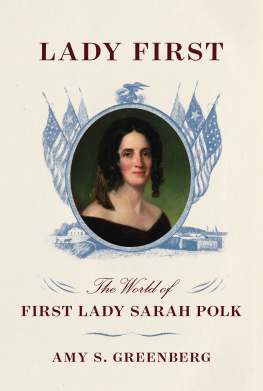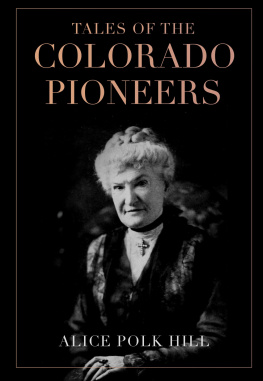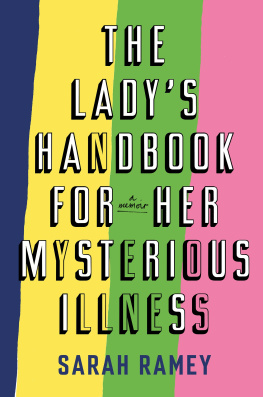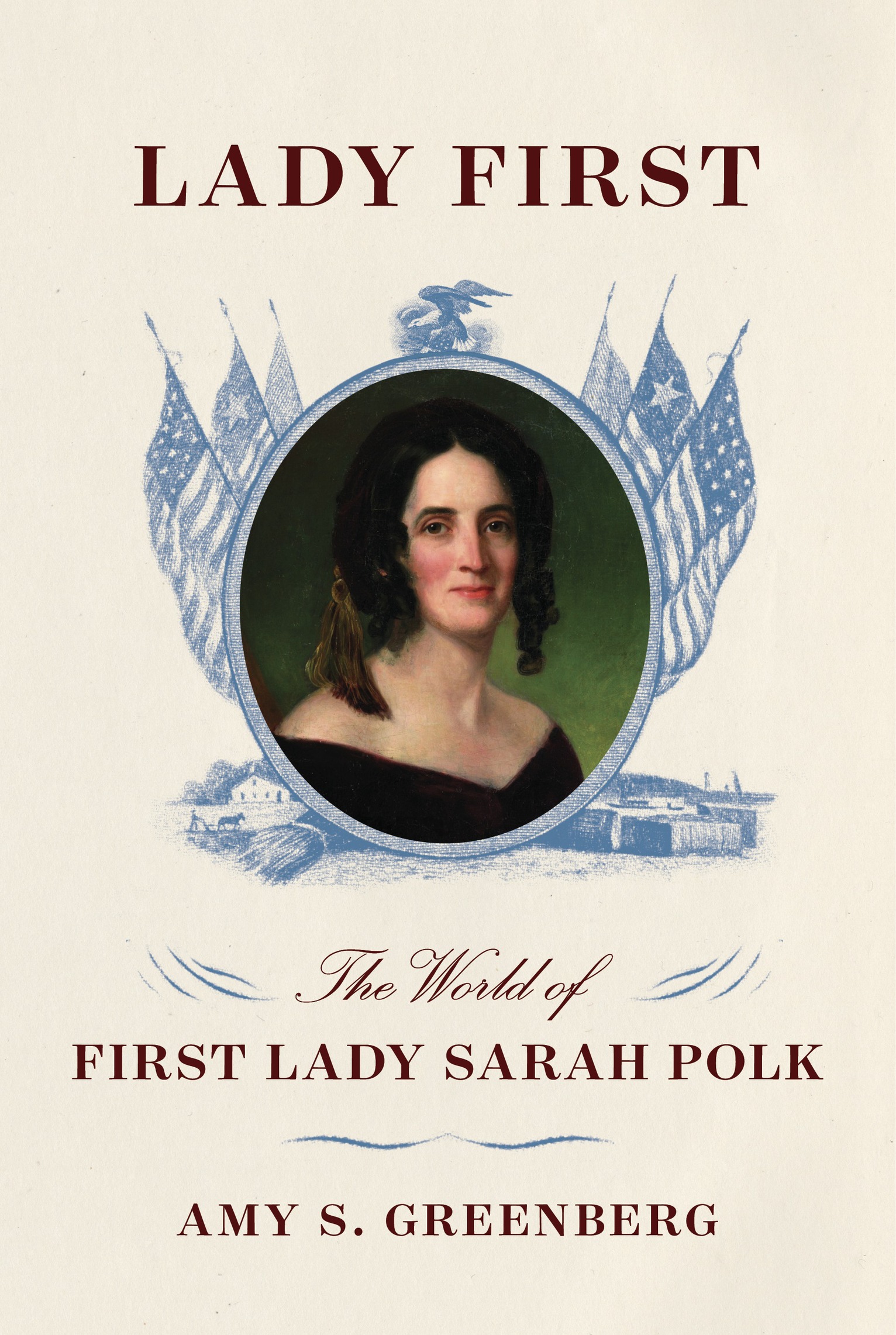A LSO BY A MY S . G REENBERG
Cause for Alarm: The Volunteer Fire Department in the Nineteenth-Century City
Manifest Manhood and the Antebellum American Empire
Manifest Destiny and American Territorial Expansion: A Brief History with Documents
A Wicked War: Polk, Clay, Lincoln, and the 1846 U.S. Invasion of Mexico
THIS IS A BORZOI BOOK
PUBLISHED BY ALFRED A. KNOPF
Copyright 2019 by Amy S. Greenberg
All rights reserved. Published in the United States by Alfred A. Knopf, a division of Penguin Random House LLC, New York, and distributed in Canada by Random House of Canada, a division of Penguin Random House Canada Limited, Toronto.
www.aaknopf.com
Knopf, Borzoi Books, and the colophon are registered trademarks of Penguin Random House LLC.
Library of Congress Cataloging-in-Publication Data
Names: Greenberg, Amy S., [date] author.
Title: Lady first : the world of first lady Sarah Polk / by Amy S. Greenberg.
Other titles: World of first lady Sarah Polk
Description: First edition. | New York : Alfred A. Knopf, [2019] | Includes bibliographical references and index.
Identifiers: LCCN 2018010748 (print) | LCCN 2018012602 (ebook) | ISBN 9780385354134 (hardcover) | ISBN 9780385354141 (ebook)
Subjects: LCSH : Polk, Sarah Childress, 18031891. | Presidents spousesUnited StatesBiography. | Governors spousesTennesseeBiography. | United StatesPolitics and government18451849.
Classification: LCC E 417.1 (ebook) | LCC E 417.1 . G 74 2019 (print) | DDC 973.6/1092 [B]dc23
LC record available at https://lccn.loc.gov/2018010748
Ebook ISBN9780385354141
Cover images: Portrait of Sarah Polk, 1846, by George Peter Alexander Healy (detail), The Picture Art Collection/Alamy; (flag detail) James K. Polk 1844 Campaign ribbon, The Frent Collection/Getty Images
Cover design by Stephanie Ross
v5.4_r1
ep
For Jane Lee Macintosh Greenberg
and in memory of
Mrs. Paul A. Greene (19222016)
A lady rises above it
Mrs. Polk was a sweet exemplification of lowliness. She was as retiring, as gentle, as though the public eye had never scanned her conduct, and the public tongue never sounded her praise.
Sartains Union Magazine, February 28, 1850
As to whom Mrs Polk is, her high character &c I need not write to you, but trust you will give her lettersuch consideration as it deserves, coming from such respectable source, and relating to a matter of importanceto the government, and National troops.
A NDREW J OHNSON , October 30, 1863
Contents
Preface
MRS. POLKS 1848
History can be capricious, as the following story about two events and one exceptionally powerful woman should make clear. For the twenty-three million residents of the United States and the seven and a half million residents of Mexico, the landmark event of 1848 was the ratification of the Treaty of Guadalupe Hidalgo, which ended a twenty-month-long war between the two countries, and transferred approximately half of Mexicos prewar territory to the United States. Although the war left thirteen thousand Americans and at least twenty-five thousand Mexicans dead, and the contested status of slavery in the newly acquired territories, including California and New Mexico, was already provoking threats of secession in the South, it was recognized at the time as a remarkable victory for both the United States and that exceptionally powerful American woman. Her name was Sarah Childress Polk, and the defeat of Mexico was her reward for years of labor alongside her husband in the name of Americas Manifest Destiny.
President James K. Polk, a taciturn fifty-two-year-old left prematurely aged by compulsive work habits and chronic intestinal complaints, emerged from the war admired by some but loved by very few other than his wife. Humorless and secretive, he lied to members of his own party, to Congress, and to the American people. The war was divisive; antiwar agitators across the country condemned the president for prosecuting an immoral war, and the nation turned against his political party, the Democrats. The opposition party, the Whigs, easily won the presidency that year with a war hero, General Zachary Taylor, as their candidate.
But forty-four-year-old Sarah Polk, a slim, elegantly dressed woman whose vivacity, youthfulness, and ability to charm formed a perfect contrast to her husband, suffered no such backlash from the war that she helped promote. On one hand this is entirely unsurprising. An age-old set of assumptions enforced by both law and custom proclaimed women unfit for public life. They werent citizens, and they couldnt vote. If they were married, their identities were legally subsumed into those of their husbands. That even rich, well-educated white women like Mrs. James K. Polk were biologically and socially incapable of contemplating matters such as foreign policy was for most Americans an assumption so obvious as to go entirely unquestioned.
Were a woman intellectually capable of engaging with affairs of state, American politics was utterly unwelcoming for the gentle sex. Americans were justly proud of their democratic institutions, but those institutions were competitive, coercive, and quite liable to turn violent. Men physically fought over political positions, while partisans fueled by free alcohol attacked one another at the polls. The wrong political statement, put into print, could result in a challenge to a duel, or a surprise attack in the streets. Election-day riots were sadly common. This was considered no space for women.
There was little debate over this point because Americas men and women agreed that the two sexes were suited to different spheres. Men belonged in the political, competitive, public world of work and elections, and women in the peaceful, religious, domestic realm of children and home. Women who crossed this line and insisted on openly expressing their political views did so at their own peril. The abolitionist Grimk sisters became notorious in the 1830s for insisting on speaking in public, and were threatened with death by angry mobs. This was the reality of womens lives in 1848.
Yet somehow Mrs. James K. Polk managed to stand above the constraints that bound other women. Her views on the Manifest Destiny of the United States were well known, as were her political efforts in support of her husband. Indeed, her dedication to her husbands agenda, and the fact that the two were a seemingly inseparable team, was a large part of her appeal as a First Lady.
In 1848 she was the most powerful woman in America. She controlled access to her husband and helped coordinate the Democratic Partys political agenda. She managed her husbands political campaigns and negotiated on his behalf with men who understood her value as a conduit. No accident, her power was grounded in decades of work as a political spouse, her remarkable powers of innovation, a deep and abiding love of politics, and the unpaid labor of dozens of enslaved people who toiled for her in her home and on a cotton planation. As a marital partner and her husbands closest advisor, Mrs. James K. Polk (the name she preferred for herself) helped create the office of the First Lady. Her political partnership with her husband and the manner in which she expanded the First Ladys role prefigured the activist First Ladies of our own era.










